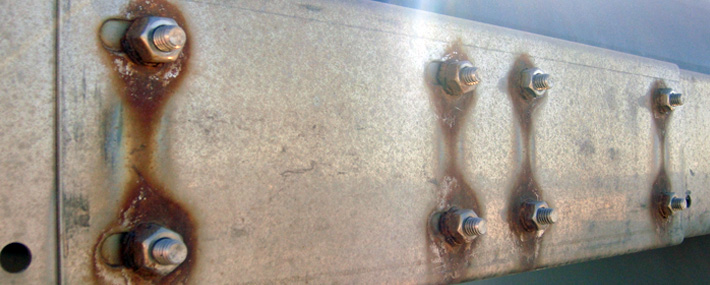Dealing with corrosion of metal parts submerged in sea water is no easy matter. Stopping the effects in the corrosion provides a better, more cost-effective solution. However, not all corrosion is the same. Rusted metal surfaces near ship propellers or drive parts may show extreme oxidation, as the metal components appear pitted, while the bow of the ship away from mechanical and electrical systems shows less corrosion.
In this circumstance, you are actually dealing with two different types of corrosion. Galvanic corrosion will wear away the metal’s surface along the bow of the ship. Meanwhile, electrolytic corrosion is in action near the mechanical area of the ship.
To understand the differences of these two corrosions, you have to understand how saltwater interacts with certain metal parts that are submerged. A simple explanation is that salt has electrolytes that dissolve in water. These electrolytes are attracted to any electrons that are found nearby. Every type of metal has electrons.
Yet some metal is more chemically active and has a greater negative electromechanical potential than others. Metals which are less chemically active are called cathodes, such as platinum, titanium, stainless steel, and silver. Metals which are more chemically active are called anodes, which are zinc, magnesium, and aluminum alloys.
When two metals enter an electrolyte solution, in this case seawater, the electrolytes connect to each metal, as they form a current flow from the anode-type metal to the cathode-type metal. This electrochemical, electrolysis, process is much like a battery current when you have a positive side and a negative side with the saltwater creating a conducive path. The electrolytes pull out the electrons from the anode metal while flowing toward the cathode metal, as the anode metal begins to oxidize and corrode away.
This oxidation process is called galvanic corrosion. To slow down galvanic corrosion, you can introduce an highly active anode metal, called a sacrificial anode, into the conducive path so the electrolytes will pull the sacrificial anode’s electrons out faster. This is the reason why you will see zinc anodes attached to ship hulls, propellers, rudders, engines, drive parts, fuel pipe lines and storage tanks. The zinc anode reduces damage to other metal parts by sacrificing itself to the corrosive process of the electrolytes.
Electrolytic corrosion is very similar to galvanic corrosion. The oxidation process is the same. The major difference is that an electric current has been introduced into the conducive electrolyte solution. When the electric current is added into seawater, it speeds up the oxidation rate as the electric current is passing from the anode metal to the cathode metal.
The anode metal appears more pitted. Electrolytic corrosion is the reason why the metal near electrical and mechanical systems on your ship is more rusted and damaged. The electrical source can be as simple as faulty wiring discharging its electric current into the water.
Knowing the difference between galvanic corrosion and electrolytic corrosion is highly important. If you don’t monitor the rate of corrosion, then you may not calculate the right number of sacrificial anodes to use to slow down the oxidation of metal parts. Also, the sacrificial anode may rust away quickly to leave the cathode metal parts exposed.
Zinc anodes are a fantastic sacrificial anode to use for maritime metal parts due to having less resistance toward saltwater as they will give up their electrons better. Here at Belmont Metals, our Brooklyn, New York manufacturing company provides sacrificial anodes made out of zinc and zinc alloys.
Our metallurgists can help you decide on the right size, formula and shape of the zinc anodes to be placed on your metal parts that will be exposed to seawater. In addition, we can also offer advice on how to attach the zinc anode so that the sacrificial anode will work properly to provide cathode protection.

